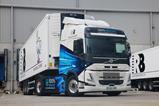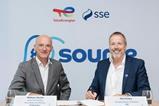In an effort to challenge China’s graphite dominance in electric vehicle batteries, manufacturers are increasingly turning to synthetic graphite, with growing investments in the United States and Europe. While the market for synthetic graphite is expanding, experts caution that China’s established position presents competition.

Recent investments in the United States and Europe are aimed at challenging China’s dominant position in the production of graphite, a critical component in electric vehicle (EV) batteries. However, experts believe this endeavor will face significant challenges.The focus has shifted to synthetic graphite, an element initially developed in the late 19th century but only redirected toward EVs in the past decade. Synthetic graphite’s application is rapidly expanding, with estimates from Benchmark Mineral Intelligence suggesting it could make up nearly two-thirds of the EV battery anode market by 2025.
On average, each EV requires 50-100 kg (110-220 pounds) of graphite in its battery pack for the anodes, which is approximately double the amount of lithium. While the market for synthetic graphite is expected to grow by over 40% in the next five years to reach $4.2 billion in 2028, according to Mordor Intelligence, companies seeking to establish themselves in this sector face formidable competition from China.
China currently refines more than 90% of the world’s natural graphite, which is used in nearly all EV battery anodes. Chinese battery materials giants like BTR and Shanshan are investing substantial amounts of money to increase their production of synthetic graphite. According to analyst Victoria Hugill of UK-based researcher Rho Motion, the introduction of synthetic graphite in the battery supply chain has matured and become commercially successful in China.
Chris Burns, CEO of Australian battery materials supplier Novonix, acknowledges the significant presence of Chinese producers in the synthetic graphite market, especially in the anode sector. He notes that companies like BTR and Shanshan continue to expand at a pace unmatched by the rest of the world.
Hugill identifies two key factors driving newcomers like U.S.-based Anovion, Novonix, and Norway’s Vianode. Setting up a synthetic graphite production facility is easier than commissioning new mining sites for natural graphite, and producers can leverage incentives provided by last year’s U.S. Inflation Reduction Act to establish synthetic graphite capacity. Moreover, new facilities don’t need to be located near a graphite mine.
New synthetic graphite production operations in the United States are expected to benefit from incentives provided in the IRA and the bipartisan Infrastructure Investment and Jobs Act. Vianode, owned by Norsk Hydro, battery maker Elkem, and Altor Equity Partners, plans to establish synthetic graphite facilities in Europe and North America with the capacity to supply up to 2 million EVs annually by 2030. This proposal boasts a production process powered by renewable energy and a significantly lower carbon footprint compared to Chinese graphite refining.
Experts also highlight the advantages of synthetic graphite, including faster charging and longer battery life, along with its generally higher purity and more predictable performance compared to natural graphite. Additionally, the price gap between synthetic and natural graphite has narrowed, prompting producers to incorporate more synthetic material into battery anodes.
The increasing demand for clean and consistent battery materials is a driving force behind the growth of synthetic graphite, as stated by battery expert Bob Galyen, founder of Galyen Energy and former CTO of China’s CATL, the world’s largest EV battery maker.
However, despite federal incentives, the construction of new synthetic graphite production facilities requires substantial investment, according to Novonix’s Burns, who notes that capital investment remains a significant challenge for the industry.
In the foreseeable future, China is expected to maintain its dominance in synthetic graphite production, with forecasts from Fastmarkets indicating continued growth from approximately 1.6 million metric tons this year to 2 million metric tons in 2030. Burns acknowledges, “The real truth is China will be the biggest player in this market for the next 10 or 20 years.” The supply and demand balance is expected to heavily favor Chinese options throughout this decade in North America.


















